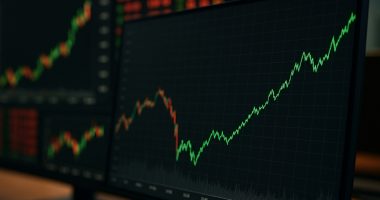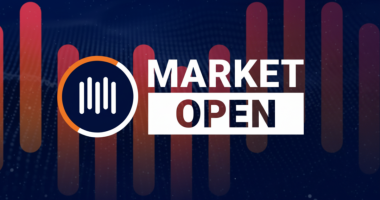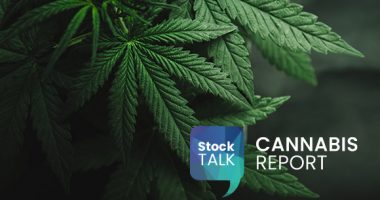Founded in Seattle in 1983 by Jim Sinegal and Jeffrey Brotman, both lifers in the retail industry, Costco (NDAQ:COST) has grown into a ubiquitous brand in the grocery space. With an impeccable reputation for putting customers first, efficiently running the business and creating shareholder value, Costco has a great deal to teach us about becoming better stock investors.
The US$245 billion market cap wholesaler – where you can buy anything from prescription eye glasses, to gas, medicine, diamond rings, US$4.99 rotisserie chickens (since 2009) and US$1.50 hotdog and soda combos (since 1985) – took a deliberate path to growing from a regional membership club for California’s federal U.S. employees, who pooled their money to get better prices on groceries, to the third-largest retailer in the world behind Amazon and Walmart at 859 stores and counting.
This path is marked by conservative capital allocation and a deliberate, humanistic approach to dealing with its suppliers, more than 300,000 employees and more than 124 million members, driven by the universal value proposition of high-quality products for a reasonable price.
Since inception, Costco customers have showed up in droves, propelling the company to US$1 billion in revenue by 1986, US$3 billion in 1989, and US$242 billion in fiscal 2023.
Let’s take a deeper look at how management has shaped an endless pursuit of value into an exceptional business to work for and invest in with our first of 10 reasons behind Costco’s stock market dominance:
1. Costco has a clear direction since inception
Costco’s management team has consistently demonstrated loyalty to the brand’s reputation and longevity, often at the expense of maximizing growth and profit. This is evident in the company’s self-imposed limit of a 11-15 per cent margin on its products – compared with Walmart’s max of 25 per cent – to ensure that customers get consistently good deals; having had only three CEOs in its history; and its loss-leaders, the aforementioned hot dogs and rotisseries chickens, in spite of selling 130 million of each every year at last count.
What management’s ride-or-die philosophy maximizes is survival, as high-flying upstarts come and go, too enthralled by the glitz and glamour of being a hot stock to care about pennies lost, or to think about their businesses a quarter century from now.
Investors with dry powder can identify management teams similar to Costco’s by examining their track records for long-term histories in their respective industries:
- Jim Sinegal, Costco’s co-founder and first CEO, worked at predecessor FedMart for 22 years, starting as a part-time bagger and eventually running distribution and warehousing for the company
- Outgoing CEO, Craig Jelinek, also worked at FedMart and was one of Costco’s first employees, whose responsibilities included overseeing the opening of its sixth location
- Ron Vachris, the incoming CEO, began his career at Costco as a forklift driver. He has been at the company for more than 40 years
- Co-founder Jeff Brotman, and his father, Bernie, were lifelong retailers, whose expertise drew them to becoming one of the earliest investors in Starbucks
- Sol Price, widely recognized as the elder statesman of U.S. retail, founded predecessors FedMart and PriceClub (the former warehousing club chain that merged with Costco in 1993), and pioneered the warehouse and membership-based discount model that helped Costco build its lean, durable and cash-flowing business
- Costco also benefits from legendary investor Charlie Munger, the vice chairman of Berkshire Hathaway, sitting on its board, bringing more than half a century of experience with identifying undervalued businesses and creating hundreds of billions in shareholder value
What these gentlemen all have in common is a sense of contributing to a cause greater than themselves, backed by a worldview, captured by Costco’s code of ethics, that views capitalism’s greed for quick gains as the antithesis of customer and investor trust.
2. A proven business model
We can summarize Costco’s management style as strategically saving money or leaving it on the table to improve the customer experience and strengthen the business. In short, company leaders care about every penny, so long as they aren’t earned or wasted at the expense of fairness.
Two examples of saving money are:
- Operating out of warehouses and serving customers straight from the pallet, which saves on transportation and shelving costs, allowing the company to keep its margins and prices low
- Keeping its skew count low at around 3,800 items, compared with Walmart’s 100,000-150,000, enabling the company to turn over its inventory more than 12 times per year, compared with Walmart’s eight times and Home Depot’s five times
- This low-skew, quick-selling dynamic affords the company average revenue per product 10 times that of Walmart, and overhead costs of 10-11 per cent compared with Amazon’s 30 per cent, allowing it to negotiate for the best prices from its suppliers, as well as sell-through inventory about every 26-27 days across its store network, leaving three to four days to profit before having to pay suppliers

Two examples of leaving money on the table are:
- Establishing an infinite full-value, no-questions-asked refund policy, except for electronics, which can be returned up to 90 days after purchase, compared with the industry convention of two weeks
- Never instituting a layoff in its history and rarely raising membership prices (last hike was in June 2017), preferring instead to weather storms by lowering overhead costs by being cleverly efficient, with same-store sales growing at 14 per cent last year, and year one of a new store today yielding better financial metrics than year five of a store in 2014
Costco’s morally upright approach has rewarded shareholders with a 15,031.97 per cent return as of Oct. 24 – despite falling by 40 per cent during the Dot-com Bubble and Great Financial Crisis – and slow and steady annual revenue growth of approximately 10 per cent for the past 30 years. A US$10,000 investment at the IPO in 1985 would have grown to US$3.3 million as of August 2023, not counting dividends, compared with US$387,433.74 for the S&P 500.
Costco is so serious about how it handles business that it flies out its market managers to its headquarters in Issaquah, Washington, for two days every month to discuss results and share learnings. As the code of ethics specifies, the central focus of these discussions, beyond how to operate further within the law, is how to do a continually better job at meeting customer, employee, supplier and shareholder needs, in that order.
3. Costco’s customer-centric culture
To phrase the point about the code of ethics above another way, Costco has demonstrated that making it more beneficial to be a customer in the short term is how you look after stockholders over the long term.
Customers buy Costco memberships to access its economies of scale, and keep coming back and telling their friends because of the consistency of these deals. Prices are so low that customers feel as if they’re gaining an advantage above and beyond the membership price, a feeling that is regularly magnified by wider-than-average parking spots, a food court menu that is undervalued across the board, and a willingness to manufacture products under its in-house Kirkland Signature brand that would have been more expensive and/or of poorer quality if sourced from third parties, among other special touches we discuss throughout the article.

In this way, management has forged a sense of trust with customers over the decades that has enabled gradual expansion, better deals with suppliers, increasing cash flow, and ultimately the creation of shareholder value. This trust was recently illustrated by Costco being voted Canada’s most respected grocer, despite not being a Canadian brand.
Where most companies with enduring customer loyalty take advantage of pricing power to maximize profits, Costco redirects these potential earnings to make sure customers feel as if they’re winning, preferring instead to make its money through volume and efficiency.
To put this in perspective, the company took in US$5.8 billion in net income from US$226 billion in topline revenue in fiscal 2022, US$5 billion from US$195 billion in fiscal 2021, and US$4 billion from US$166 billion in fiscal 2020, a lopsided relationship to say the least, but one that works at the most fundamental level because shoppers that buy in bulk are, on average, wealthier than those who frequent conventional supermarkets.
Independent research cited in the Costco episode of the Acquired podcast, which is the main source for this article, found that the typical Costco customer earns US$125,000 per year, compared with Walmart customers’ US$80,000 median yearly income, and a median of US$71,000 for the entire United States. Boasting a higher than 90 per cent retention rate, Costco can rely on this loyalty to orchestrate a fine balance between its customer-accretive margins and value propositions for its employees and suppliers that are similarly enticing.
4. Costco empowers its employees
Costco employees benefit from the company’s conservative, self-imposed margins through their average wage of US$26 per hour, well ahead of Walmart’s US$19.50 per hour, as well as eligibility for health care and a 401k plan with a match.
Promotions also tend to be internal, as evidenced by 36 per cent of U.S. employees having accumulated more than 10 years of service, continuing in the tradition of favouring candidates with vast retail experience as we discussed in the management section.
Such a setup is responsible for Costco’s low 7 per cent attrition rate, with most retailers coming in at about 20 per cent; its top executives averaging a more than 10-year tenure; and shrink accounting for roughly only 0.15 per cent of sales.
Strategic incentives, for customers and employees, are the main pillars supporting the company’s highly curated supply partners, most of which count Costco as their most important and therefore livelihood-preserving client.
5. Costco’s close supplier relationships
Because of their limited number, Costco enjoys deep relationships with its suppliers, who in turn enjoy robust revenue, should they determine that the company’s desired discount is worth the potentially global exposure for their brands.
These intimate relationships aren’t always smooth sailing, given suppliers’ placing fourth in the code of ethics, but they are always fair, leading to constant renegotiations should a commodity drop or rise in price.
Tying Costco’s customer-employee-supplier trifecta back to prospective stock picks, it is obvious when a given management team practices a fiduciary mindset, which compels them to always act in the best interests of the people they serve and do business with. All you have to look for is how they’re allocating money: into their pockets, or back into the business.
6. Capital-light operations
In Costco’s case, management spends most of its time shaving off expenses without sacrificing operational quality so it can spend more on keeping customers happy.
Yet another example of this is how the company transports its merchandise to its warehouse network through cross-docking, a process that enables the direct transfer of cargo from incoming trucks into outbound ones without having to pay for intermediate storage.
Another is how the company stays within its circle of competence, only spending on new ventures when it identifies a differentiated path, such as its foray into e-commerce with a focus on bulky items other retailers like Amazon don’t excel at or offer, such as sheds, fridges, water heaters, washers and dryers, and Costco Next, which offers customers the convenience of shopping directly on select partner websites at a discount for little to no overhead costs.

Unlike Amazon – which spends billions on its driver network and robotic infrastructure to optimize its sorting stations – Costco also knows you will travel to its stores, meaning it doesn’t have to adopt unfamiliar technology for profits to keep rolling in.
Management’s focus on making every dollar count, a sought-after trait in any long-term stock holding, affords Costco about US$1,800 of revenue per square foot, three times Walmart’s approximately $600 and four times Target’s US$450, producing plenty of cash to fortify the company’s quest for value.
7. Costco has a cash-rich business
According to The Science of Hitting, Costco has returned approximately 80 per cent of net income to stockholders over the past decade while managing to add more than 200 locations to its store count.
The dividend has grown by 1,020 per cent from US$0.10 at inception in 2004 to US$1.02 as of August 2023, with the company further contributing to shareholder value with billions in buybacks when management believes the stock to be undervalued.
These numbers astound because they stem not from price hikes but from management’s focus on continually doing better for customers for less, with reasons 1-7 resulting in a fortresslike quality that prevents competitors from mooching from Costco’s tightly kept ship.
8. The mightiest of moats
The ability to rake in billions in profit by strategically curating, moving and marketing hundreds of billions in merchandise is an example of a moat, or a competitive advantage that protects a company from competitors in its marketplace.
Costco’s moat is especially sturdy because it sets the company up to thrive regardless of the economic environment. If there’s a recession, customers will continue to show up because of the low prices. If there’s a boom, customers’ higher yearly income will ensure robust sales. It’s this resiliency that allows Costco stock to trade at a hefty price-to-earnings multiple of 39.06 as of Oct. 24, which means investors believe the company will surpass more than 39 times last year’s earnings in a reasonable enough timeframe to reward them with a satisfactory return.
To try and re-create the scale of customer trust that keeps Costco running would require an investment that would, if unsuccessful, sink even the largest institutional investor. The company’s Kirkland Signature brand alone does more revenue per year than Nike at approximately US$52 billion per year, not counting gas, making it the largest consumer packaged brand in the world.
While every stock in your portfolio can’t be as untouchable as Costco, its underlying businesses should offer unique products and services to capitalize on revenue streams with unrealized potential, as well as a clear idea about how shareholders will be rewarded from these efforts into the future.
9. Shareholder value
At first glance, it might be tempting to say Costco shareholders are wearing rose-colored glasses, that a 15,000 per cent return since inception is unlikely to double to 30,000, simply because the business’ massive size seems like it’s on the tail-end of exponential growth.

We believe this view fails to take into account that Costco is synonymous with value and has ample room for global expansion.
A key driver is China, whose first Costco opened in 2019 and signed up more than 400,000 members in its first two years, a highly prospective achievement considering that mature U.S. stores average around 68,000 members. The company plans to open six stores in China next year.
New locations opened in summer 2023 include four across the United States, as well as two in China, one in Australia and one in Japan, adding to the company’s 268 non-U.S. store network.
During Costco’s May 2023 earnings call, CFO and Executive Vice President Richard Galanti, who has been with the company since 1993, crystalized the company’s growth outlook by stating “we’d like to get above 25 [new stores] over each of the next five years and closer to 30 in years six through 10.”
All signs are pointing towards a continuation of the company’s strong track record of growth and profitability, driven by an unwavering long-term focus on rewarding customer loyalty.
10. Costco plays the long game
Since inception, Costco has eschewed the short-term gains of rapid growth and maximized margins in favour of instituting incremental improvements in the direction of a greater value-add.
After almost 40 years in business, the company’s commitment to quality service is a testament to the power of compound interest, even in the face of its stock’s multiple 40-per-cent haircuts and umpteen wars and other geopolitical events that shocked the global market during the period.
Like Costco, every business in your portfolio should play established, sustainable and expandable roles in its target markets, or embody the clear potential to do so, granting you the conviction to hold on through the unavoidable uncertainty of how the future will unfold. In this way, you’ll be able to invest in stocks over a lifetime and meet your financial goals without stressing over the broader market’s manic-depressive tendencies.
Besides identifying exceptional businesses, your greatest advantage as an individual investor is controlling your emotions when the average investor is running for the hills, unaware that short-term volatility always yields to value creation in the end.
Join the discussion: Find out what everybody’s saying about Costco stock on the Costco Bullboard, and check out the rest of Stockhouse’s stock forums and message boards.
The material provided in this article is for information only and should not be treated as investment advice. For full disclaimer information, please click here.



